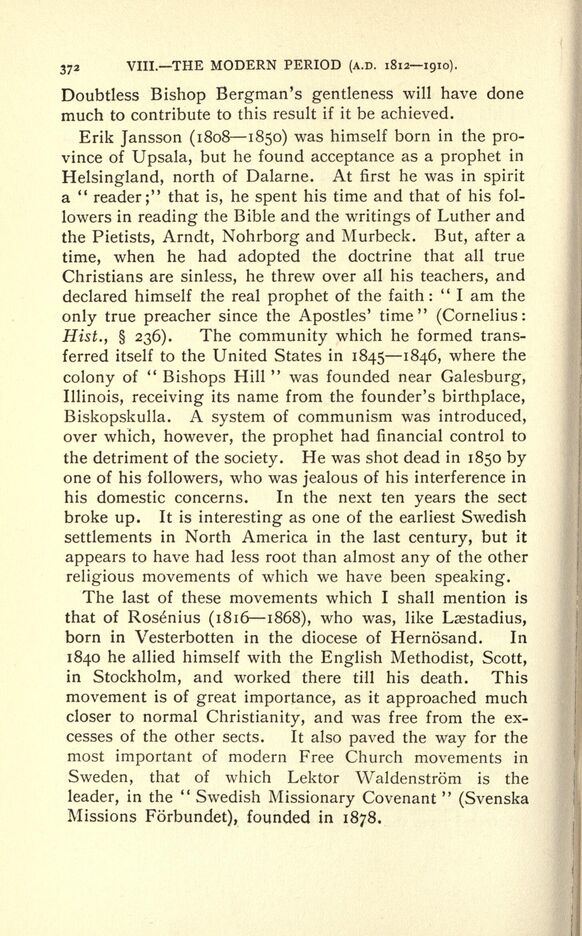
Full resolution (JPEG) - On this page / på denna sida - VIII. The Church in the last century (1811—1910 A.D.)

<< prev. page << föreg. sida << >> nästa sida >> next page >>
Below is the raw OCR text
from the above scanned image.
Do you see an error? Proofread the page now!
Här nedan syns maskintolkade texten från faksimilbilden ovan.
Ser du något fel? Korrekturläs sidan nu!
This page has never been proofread. / Denna sida har aldrig korrekturlästs.
372 VIII. THE MODERN PERIOD (A.D. 18121910).
Doubtless Bishop Bergman s gentleness will have done
much to contribute to this result if it be achieved.
Erik Jansson (1808 1850) was himself born in the pro
vince of Upsala, but he found acceptance as a prophet in
Helsingland, north of Dalarne. At first he was in spirit
a
"
reader;" that is, he spent his time and that of his fol
lowers in reading the Bible and the writings of Luther and
the Pietists, Arndt, Nohrborg and Murbeck. But, after a
time, when he had adopted the doctrine that all true
Christians are sinless, he threw over all his teachers, and
declared himself the real prophet of the faith :
"
I am the
only true preacher since the Apostles time" (Cornelius:
Hist., 236). The community which he formed trans
ferred itself to the United States in 1845 1846, where the
colony of
"
Bishops Hill
"
was founded near Galesburg,
Illinois, receiving its name from the founder s birthplace,
Biskopskulla. A system of communism was introduced,
over which, however, the prophet had financial control to
the detriment of the society. He was shot dead in 1850 by
one of his followers, who was jealous of his interference in
his domestic concerns. In the next ten years the sect
broke up. It is interesting as one of the earliest Swedish
settlements in North America in the last century, but it
appears to have had less root than almost any of the other
religious movements of which we have been speaking.
The last of these movements which I shall mention is
that of Rosenius (1816 1868), who was, like Laestadius,
born in Vesterbotten in the diocese of Hernosand. In
1840 he allied himself with the English Methodist, Scott,
in Stockholm, and worked there till his death. This
movement is of great importance, as it approached much
closer to normal Christianity, and was free from the ex
cesses of the other sects. It also paved the way for the
most important of modern Free Church movements in
Sweden, that of which Lektor Waldenstrom is the
leader, in the
"
Swedish Missionary Covenant "
(Svenska
Missions Forbundet), founded in 1878.
<< prev. page << föreg. sida << >> nästa sida >> next page >>